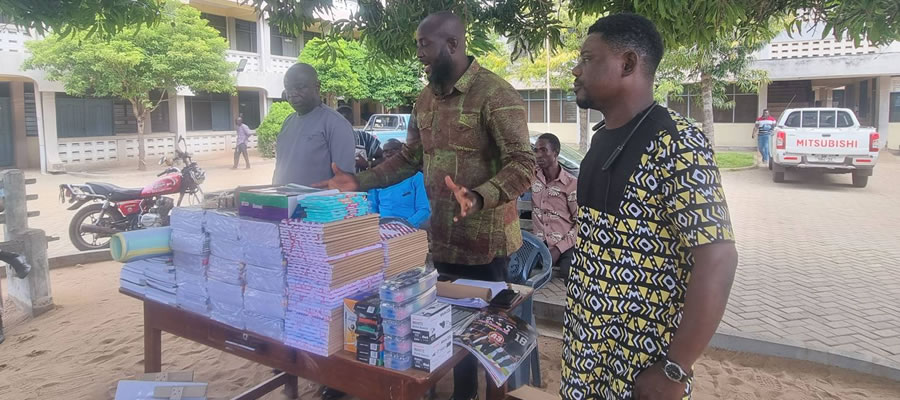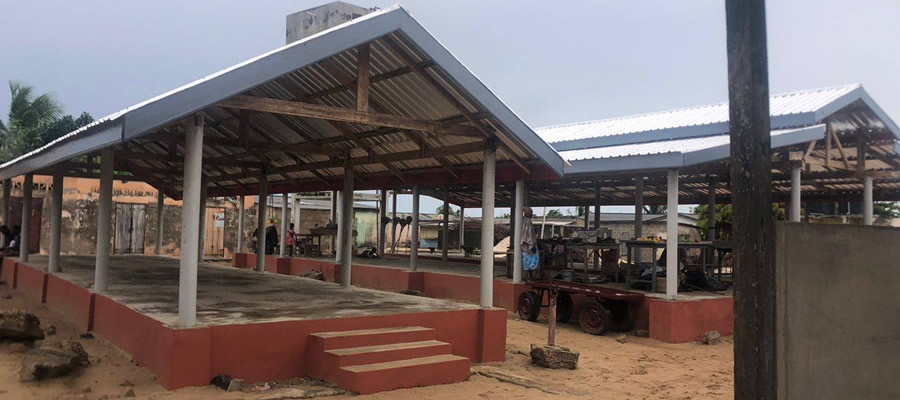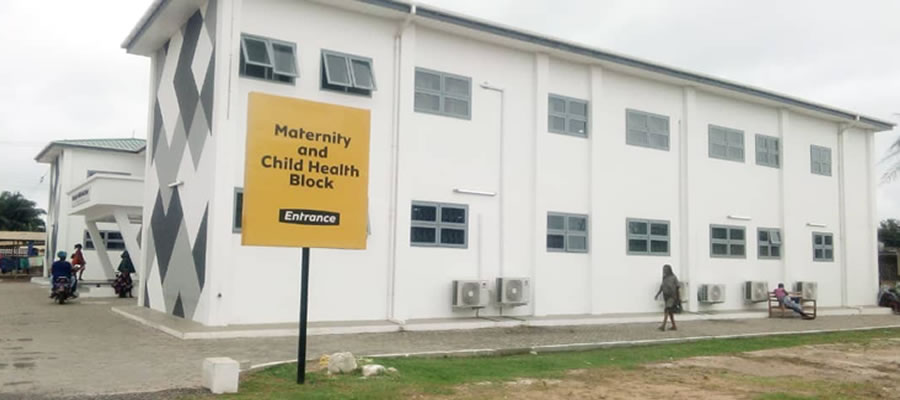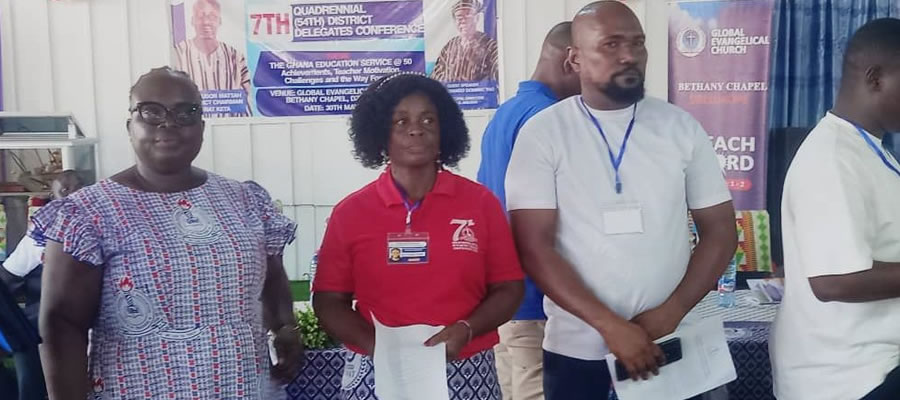

Physical Feature
Location and Size
The Municipality lies within Longitudes 0.30E and 1.05W and Latitudes 5.45N and 6.005S.
It is located east of the Volta estuary, about 160km to the east of Accra, off the Accra-Aflao main road. It shares common borders with Akatsi South District to the north, Ketu North and South Districts to the east, South Tongu District to the west and the Gulf of Guinea to the south. Out of the total surface area of 1,086km2, approximately 362km2 (about 30 per cent) is covered by water bodies. The largest of these is Keta Lagoon, which is about 12 km at its widest section and 32km long.
Relief and Drainage
Keta Municipality is a low-lying coastal plain with the highest point of only 53 metres above sea level around Abor in the north of the Municipality. The lowest point is approximately between 1 to 3.5 metres below sea level along the coast around Vodza, Kedzi and Keta townships. Three main geographic belts may be identified namely the Narrow Coastal Strip, the Lagoon Basin of the middle belt and the Plains of the North.
(i) The coastal Strip
The generally low-lying nature has exposed particularly the eastern parts of the coastal strip to intense sea erosion and occasional flooding. Notwithstanding, a great irrigation potential exists. The Coastal Strip is marked by sand bars with a few sea cliffs bordering the coast. This belt is affected by severe sea erosion, the previously worst hit areas include Keta, Kedzikope, Vodza, Kedzi and Horvi which have been saved by the Keta Sea Defence Project. Currently Srogboe-Dzita stretch is under severe sea erosion resulting in damages to properties and loss of livelihoods to about twelve communities which are periodically cut off during high tidal waves. This is also being resolved with the construction of another Sea Defence Projects.
(ii) The Lagoon Basin
The general elevation of the lagoon basin is also below sea level. It is made up of lagoons and islands such as Atiavi, Alakple, Seva, Anyako and Dudu. The basin is generally marshy due to the underlying sandy-clay geological formation. The main drainage basins are the lagoons, which together constitutes about 362km2. The major lagoons include Keta, Angaw Agbatsivi, Logui, Nuyi and Klomi. Into this basin drains some streams and distributaries of the Volta River. These include such streams as Angor, Avida, (near Hatorgodo), Awafla (near Awaflakpota), Nukpehui (in the north-western part of the Municipality), Tordzie and Kplikpa. Many of the creeks are dwindling in size due to low rainfall, excessive evaporation and siltation. As a result, the volume of water in the lagoon has drastically declined and tends to fluctuate seasonally, leading to the emergence of several islands in the Keta, Angor and Agbatsivi lagoons. The biggest among the Islands are Seva and Dudu, which are partially inhabited.
(iii) The Northern Plains
The Northern plain is generally gently undulating with a relatively higher elevation of about 50 metres above sea level.
Vegetation
The entire Municipality falls within the coastal savanna zone which is categorized into four (4) vegetational Zones.
- The northern part of the Municipality marked by tall grasses and interspersed with medium sized trees with relatively higher density.
- The mid-section of the Municipality with short grasses and short trees with occasional occurrence of “Pamira” palm and baobab trees.
- South-western part, characterized by mangrove plants along the Volta estuary and tall grasses used for fuel, and mat/hat weaving respectively.
- South-eastern part along the coast from Whuti with short grasses and many neem trees. Most of the coconut trees along the coast have been affected by the Cape St. Paul Wilt disease. This has had a major influence on the pattern of rainfall in the Municipality.
The municipality is a home to most of the Fauna that are extinct such as sitatunga, 15 families of finfish's, Manatees, monkeys, African/Royal python, and 3 species of marine turtles, crocodiles and high diversity of bird species.
Climate
Rainfall
The Municipality falls within the Dry Coastal Equatorial Climate with an annual average rainfall of less than 1,000mm. The amount of rainfall reduces as one travels from the north to the coastal parts where only about 800mm per annum may be recorded. The Municipality is thus one of the driest along the coast of Ghana. The Municipality experiences a double maximum rainfall pattern. The major rainy season is between March and July while the minor one begins in September and ends in November. Thus the total amount of rainfall is relatively low. Hence all year round cropping is severely constrained and the vegetable farming around Anloga which depend largely on irrigation.
Temperature
The high average temperatures (about 30oC), couple with low relative humidity, promote high evapo-transpiration. The high evapo-transpiration also exacerbates the general water deficient conditions and a potential for salt production. The pattern shows a declining trend and the distribution over the year is highly uneven.
Soils
(i) Oyibi-Muni Association
Along the coastal strip are the Oyibi-Muni and Keta Associations characterized by sandy soils often without any top layer of humus. Naturally, it supports coconut cultivation. When manured, it supports shallot, okro, pepper and other vegetables. In fact, this strip is the leading shallot producing area in Ghana though it covers only about 11 per cent of the Municipality (excluding lagoons).
(ii) Ada-Oyibi Association
The Soil in the lagoon basin (Ada-Oyibi Association) is very shallow, overlying a hard and compact clay formation. The soil is generally alkaline and supports mangrove vegetation, sugar- cane, and grass for pasture. Due to the underlying clay, this area is liable to flood and not suitable for arable farming though it covers over 75 per cent of the total dry land of the Municipality.
(iii) Toje-Alajo Association
The Toje-Alajo Association covers the Northern plain around Abor and constitutes about 14 per cent of the Municipality (lagoon excluded). It is relatively deep and supports crops like cassava, maize and legumes.
Date Created : 11/21/2017 4:00:27 AM










 facebook
facebook
 twitter
twitter
 Youtube
Youtube
 +233 593 831 280
+233 593 831 280 0800 430 430
0800 430 430 GPS: GE-231-4383
GPS: GE-231-4383 info@ghanadistricts.com
info@ghanadistricts.com Box GP1044, Accra, Ghana
Box GP1044, Accra, Ghana